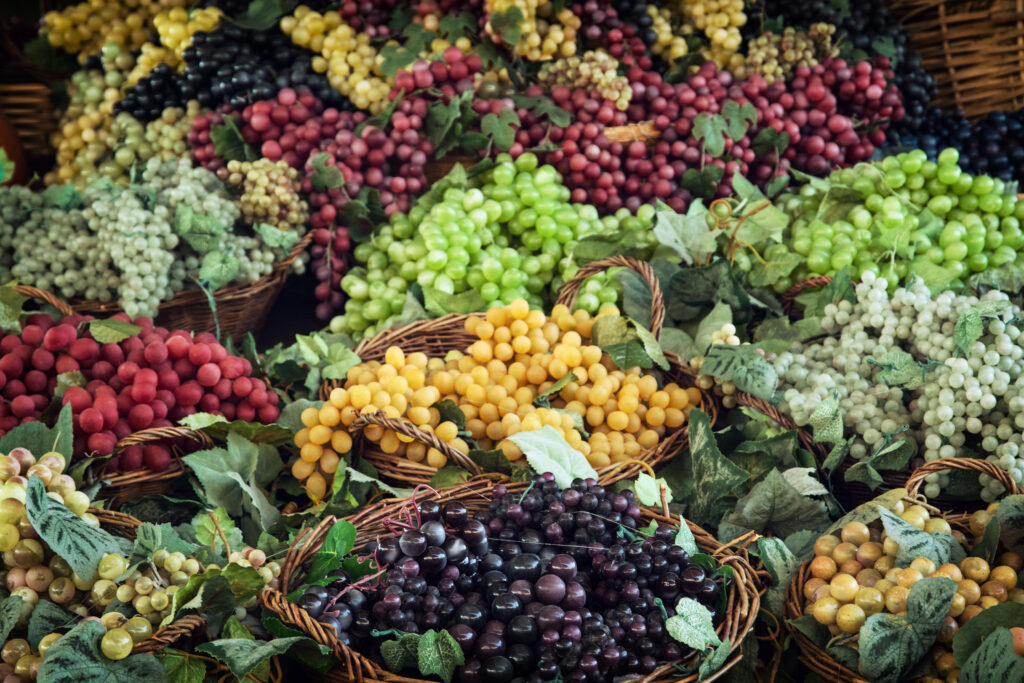B: Varietals

We previously learned there are more than 10,000 wine grape varietals in the world – but only about a dozen are being used actively. Each have their own inherent personality that becomes the foundation for the final wine – Riesling delivers bracing acidity, Sauvignon Blanc have an herbal quality, Zinfandels pack a bit of pepper, while Cabernet Sauvignon brings dark plum and black cherry flavors. We will get more into specifics in Module 3: White Wine and Module 4: Red Wine, but a bit of the basics is as good a starting point as any.
In LESSON ONE, we introduced two terms which provide the backbone for understanding US wines: VITIS VINIFERA and VITUS LABRUSCA. These terms refer to the specific species of the wine grape, not the varietal itself. VITIS VINIFERA is the species most well known in the US and across the world. Varietals from Chardonnay, Cabernet Sauvignon and Pinot Noir are all part of this species. In fact, all the wines DOMSOM will cover are within the VITIS VINIFERA species. Never fear! US species are making their own name for themselves mostly in regional wine varietals and styles. And if we are being cavalier, US species and rootstock are broadly recognized as saving European wine from extinction due to their phylloxera tolerance.
Native to the US are multiple species from different regions and all have their own unique flavors and characteristics. Just because a US varietal is a red wine grape, does not mean it can be made into good, or even great wine the same way as a VITIS VINIFERA varietal. Just ask early explorers to North America who tried! Here are just a few species and where they are most likely to be found:
- Vitis Labrusca – East and Northeast US, most common varietal is Concord (yes, the same one producing the grape juice you drank as a kid!)
- Vitis Riparia – US Midwest, the source and the cure for phylloxera (its rootstock was tolerant to the pest and allowed VITIS VINIFERA to be grafted on, thus saving the species)
- Vitis Aestivalis – Mid-Atlantic to Midwest, the Norton varietal is best known and is extremely relevant today in many states such as Missouri and Virginia
Without going into painful botanical details, it is important to understand that grape varietals have morphed and changed throughout centuries as they are like creatures from sci-fi films which can modify genetically producing numerous variations, or varietals called “clones”. How else can we explain the more than 10,000 kinds of grape varietals identified today?! Most of the varietals we will cover in this course are Kissing Cousins, having mutated into completely different varietals either naturally (cloning) or by human intervention. Pinot Gris and Pinot Noir, for example, are second or third cousins all originating within the Pinot grape family.
